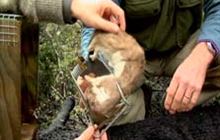Weasels
Introduction
Weasels are found in low numbers in most habitats in New Zealand. This mustelid poses a significant threat to native wildlife.By the mid 1870s, rabbits were becoming a serious agricultural pest in New Zealand. Farmers demanded that the natural enemies of the rabbit (mustelids) be introduced. Despite the protests of bird experts, ferrets, stoats and weasels were released throughout pastoral areas and by the mid 1890s they had spread into forests west of Lake Manapouri.
Far too late, after many official protests, the government changed its policy on mustelids in 1903. However, it was not until 1936 that all legal protection for mustelids was removed.
Facts
Like stoats and ferrets, weasels are predators of native birds, eggs, lizards and insects. Weasels have had a big impact in cases where they have damaged small populations of, for example, Whitaker’s skink.
The threat
Weasels are found in low numbers in most habitat types in New Zealand but impact on lizard and invertebrate populations as well as bird life. Whittaker’s skink on the mainland has been reduced to a single remnant population by predation pressure and loss of habitat from bush clearance and conversion to pasture.
The population remains under constant threat from weasels, mice and rats. Weasels will tackle a prey much larger than themselves and nesting birds are easy targets.
DOC's work
New Zealand provides only a marginal habitat for weasels and their impact on native birds is similar to stoats although on a much smaller scale. Weasels were originally introduced in larger numbers than stoats but have not thrived – probably because of the absence of abundant easy prey.
Control programmes to manage and remove animal pests, such as weasels, are essential for the survival of New Zealand's special native species and ecosystems.
DOC's conservation management remains focussed on removing threats such as possums rather than proceeding into large scale restoration of natural areas.
You can help
The main method of control for weasels is trapping. Contact your local DOC office for further information on how to build a trap-box, and how to set a Doc 250 trap.
District Councils also have pest control officers who will be able to advise you on control methods.
A useful reference book is `Native Forest Restoration: A Practical Guide for Landowners' by Tim Porteous (Queen Elizabeth the Second National Trust, 1993).

